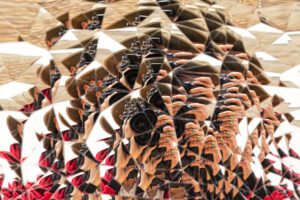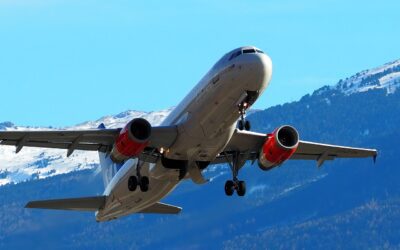Death by selfies is becoming far too common. It seems as though the competition for social media followers, likes, loves, and comments is too often turning smart adult brains into mush and causing deaths and serious injury.
 I’ve written about death by selfies by travelers before. Researchers across the globe have published their work about them and the problem of “selfie addiction,” which continues to wreak havoc on too many families. From March, 2014 through May of this year, there have been 432 selfie deaths and 86 serious selfie injuries documented worldwide.
I’ve written about death by selfies by travelers before. Researchers across the globe have published their work about them and the problem of “selfie addiction,” which continues to wreak havoc on too many families. From March, 2014 through May of this year, there have been 432 selfie deaths and 86 serious selfie injuries documented worldwide.
These are some of the death by selfie (or almost death) incidents from this year alone.
- In February, a 55-year-old Canadian tourist had both of her hands bitten off by a shark as she tried to take a selfie with it at Turks and Caicos Islands. She had to have one of her arms amputated below the wrist and the other halfway up her forearm.
- Also in February, a 53-year-old Russian tourist died in Sri Lanka while taking a selfie while she was hanging on the train car’s footboard leaning out of it, on the famous Podi Menike railway line. The woman’s head was apparently smashed in with a rock and she fell to the ground below. She died at the hospital of her head injuries.
- In April, a 63-year-old British tourist died in Segovia, Spain. He reportedly was taking selfies from the ledge on stairs leading to the Postigo del Consuelo with great views of the world-famous Segovia aqueduct. He apparently lost his balance, falling backward. He died on the scene with his two daughters looking on.
- Also in April, a 29-year-old was attacked by a crocodile after climbing into its enclosure at a Filipino zoo. A handler was able to hit the croc in the head with a block of cement, freeing the man, after he was in the enclosure for 30 minutes during which the crocodile had bitten his arm and thigh and thrashed him. He received 50 stitches and somehow survived.
This month, an American man who tried to scale a metal fence to obtain a selfie at the Colosseum in Rome became impaled on it. He escaped death by selfie.
- He remained impaled for more than 20 minutes until rescue and medical personnel could free him. It’s been reported that the fence’s metal tip pierced the man’s spinal column. At the hospital, he received more than 80 stitches. He survived and at last report was in stable condition.
- Also this month, a 47-year-old Florida man was gored by a bison in the Lake Village area of Yellowstone National Park while attempting to take a selfie with the bison. He survived.
It’s also important to look back on a few other examples of “death by selfie,” that involve self-indulgent, attention-seeking, destructive selfies, that didn’t put lives in danger.
- A woman tried to take a selfie in 2017. She single-handedly almost knocked down the entire “Hypercaine” installation at the 14th Factory in Los Angeles. This is according to the gallery founder. It cost almost $200,000 in damages.
- That same year, an Instagrammer tried to take a selfie with Yayoi Kusama’s “Infinity Mirrors” at the Hirshhorn Museum and Sculpture Garden. He lost his balance and slammed into one of the exhibit’s pumpkins. The damage wasn’t major, but it closed the gallery for days, disappointing thousands who traveled to see the exhibit.
- In 2024, an egregious act of vandalism of a 6,000-year-old cave painting occurred in southern Spain. A 39-year-old man from Spain poured a bottle of water on the precious painting on the limestone wall to make it more visible. This was for his Facebook photo post. The paintings date back to between 5,000 and 2,000 BCE. They are among the oldest known examples of human art in the region. The water has caused irreparable damage to the paintings.
- Last year, a 22-year-old man damaged the Fountain of Neptune, created in 1558, in the Piazza della Signoria in Florence, Italy. He’s accused of knocking off a chunk of marble from Neptune’s chariot, and he cracked one of the horse’s hoofs of the priceless sculpture.
A selfie is a photo or video that’s made by oneself, often with others, and for travelers, with a destination in the background.
If you’re not sure what a selfie is, it’s a photograph or video made by and of oneself, perhaps with others in it. It normally is made with a smartphone held at arm’s length or with the aid of a pole (selfie-stick).
You’ve probably seen hundreds or maybe thousands of selfies. Generally, these are taken with the intent of sharing them on social media. They’re taken on special occasions and at ordinary times, plus definitely during travel, often to show off travelers’ destinations. They’re mostly taken safely, but far too often, they’re taken with caution thrown aside.
Today, smartphones have enhanced the ability of travelers and others to make selfies. Coupled with the popularity of social media, the problem of “death by selfie” is rising everywhere. Among too many, posting the best selfie has turned into a world-wide competition for social media photo junkies. “Selfie mania” has pushed otherwise mature, smart people to throw away their common sense and put themselves unnecessarily into high-risk situations. Too often it’s resulted in serious injury or death.
I’ve made self-portraits for years, but safely, carefully and thoughtfully, across the globe, as a professional photo journalist.
I have made self-portraits for years, safely, carefully, and thoughtfully. As a professional photo journalist, I’ve traveled to every continent on Earth. I have been to many of the same locations as those who perished taking selfies. This has me shaking my head about these selfish, unnecessary acts that have killed and maimed too many. They have destroyed great and historic works of art and consequential evidence of human history. These selfies were merely to increase follower counts, likes, loves, or to gather huge numbers of social media or blog comments. The deaths, maiming, and destruction were preventable.
Death by selfie. I have three rules of selfie conduct and self-preservation.
1. Respect others: It’s bad enough to stupidly put yourself in danger by taking a selfie. It’s unconscionable to endanger others.
2. Have respect for wildlife: Respect for wildlife is two-fold. First, be careful not to be hurt by wildlife. Second, be careful not to hurt wildlife or their habitat so everyone can continue to enjoy seeing and studying them.
3. Respect yourself: Self-respect is essential to living successfully in this world. Each person wishing to create a selfie must focus on their surroundings to prevent tripping, slipping and falling. It doesn’t matter if you’re near water or at a great height. Each person must have respect for any dangerous position they’re in.
Nathalie Auger, MD, MSc, a physician epidemiologist at the University of Montreal Hospital Research Centre in Canada, has conducted significant research on selfies as a public health issue. I agree with Dr. Auger, who thinks that these selfie-related deaths and major injuries are likely undercounted and that awareness and prevention have received little attention. It’s why I’ve been writing about selfie suicide and why I will continue to bring as much attention to this public health crisis as possible.
(Image: Self Portrait of Ned S. Levi, reflection in Untitled work (2010) of Anish Kapoor. He is British, born in India in 1954, Stainless steel concave dish at High Museum of Art.)

READ ALSO:
Here come airlines’ baggage fees increases again
Ten costly cruise mistakes to avoid!
After many years working in corporate America as a chemical engineer, executive and eventually CFO of a multinational manufacturer, Ned founded a tech consulting company and later restarted NSL Photography, his photography business. Before entering the corporate world, Ned worked as a Public Health Engineer for the Philadelphia Department of Public Health. As a well known corporate, travel and wildlife photographer, Ned travels the world writing about travel and photography, as well as running photography workshops, seminars and photowalks. Visit Ned’s Photography Blog and Galleries.



